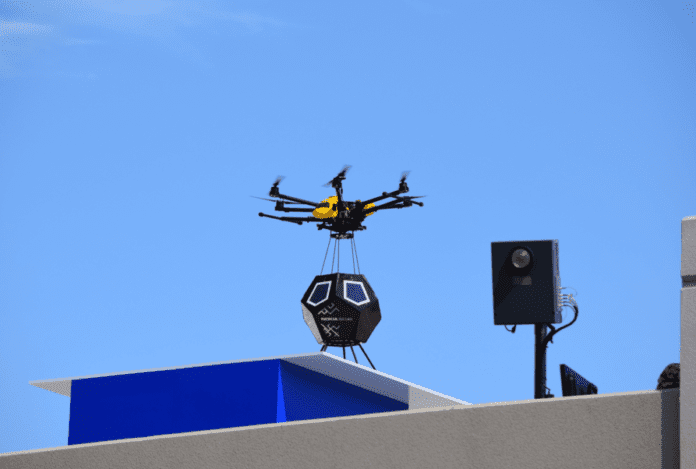Nokia said it has found a way to solve small cell backhaul and power challenges for operators by using drones. The technology comes out of the Bell Labs unit Nokia acquired when it bought Alcatel-Lucent.
The solution will use drones to deposit solar-powered units called F-Cells on rooftops, and these will connect wirelessly to 64-antenna massive multiple-input multiple-output systems. Each antenna system will support eight F-Cells.
In a recent test in Silicon Valley, an F-Cell was installed by a drone and then the unit self-powered, self-configured, and automatically connected to the network. No fiber or power cables were used.
“F-Cell is a key breakthrough in massively scalable and massively deployable technology that will allow networks to deliver seemingly infinite capacity, imperceptible latency and connectivity to trillions of things,” said Marcus Weldon, president of Nokia Bell Labs and Nokia CTO.
Before they can start connecting trillions of things, mobile network operators need to find ways to support today’s data traffic, which is growing faster than network capacity. Small cells are seen as a way to get more bandwidth out of existing spectrum, but the process of permitting each cell and connecting it to power and backhaul is a challenge. Carriers know how to pinpoint the area in which the network needs a small cell, but often they do not know whether they will have access to power and backhaul in that spot until they investigate and negotiate.
Wireless, solar-powered small cells would solve some of these problems. Sprint and T-Mobile US have already started experimenting with wireless backhaul, and these are typically most reliable in unobstructed environments, often described as line-of-sight deployments.
Nokia said that its F-Cell solution will support non-line-of-sight wireless networking in frequency division duplex or time division duplex mode, and the parallel operation of up to eight individual 20 megahertz channels allowing for a system throughput rate of roughly 1 gigabit per second over existing LTE networks. The company foresees the architecture scaling to eventually support more than 10 Gbps by using higher spectral bandwidth, new spectral bands and a larger number of antenna arrays. This vision gave the F-Cell its name: The ‘F’ stands for future.
CTIA recently named the F-Cell as one of its emerging technology award winners in the area of wide-area network technology. F-Cell was the No. 1 winner in this category, followed by solutions from Pivotal Communications and Cradlepoint.
Follow me on Twitter.

